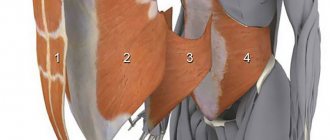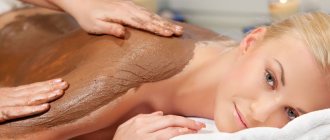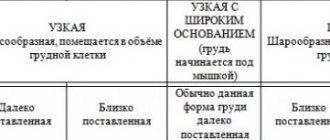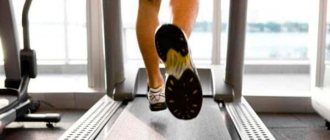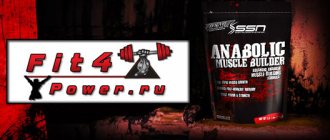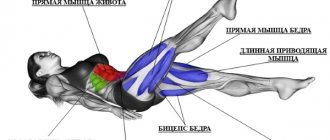When can you start exercising after giving birth?
During the first 1.5 - 2 months. After childbirth, you should not put any physical strain on your body. It is better to devote this time to restoring health, establishing a diet with sufficient vitamins and microelements. After 2 months the load can be gentle.
When breastfeeding, it will take about 9 months for hormonal levels to completely normalize. At this time, it is difficult to lose weight - the body is still under stress. Excessive attempts to lose excess weight can lead to metabolic disorders or the disappearance of milk.
Simple exercises can be performed after 1.5 months. after the baby is born. At first, it is enough to regularly walk with a stroller for half an hour. Then you can increase the speed of your step and the duration of your walk.
This will allow you to burn extra calories better than with race walking. It is advisable to start full-fledged training after 3 months. after childbirth, which went naturally and without complications.
After a caesarean section and episiotomy, physical activity is contraindicated for six months. Pilates and yoga are suitable as gentle forms of exercise, allowing you to strengthen your abs and pelvic floor muscles.
When can you start exercising after giving birth?
Childbirth is a physical and mental stress on a woman’s body. Changes occur in almost all organs and systems:
- The uterus after childbirth is stretched and increased in volume, its weight is 1-1.5 kg. It takes at least 6 weeks for her to return to her normal size;
- internal organs, raised and compressed by the enlarged uterus, need time to return to their normal position and restore their functions;
- The hormonal background of a pregnant woman was largely determined by the activity of the placenta. After childbirth, it changes dramatically; only hormones that ensure lactation continue to be actively produced;
- During childbirth, the bones and ligaments of the pelvis move apart and become deformed, and the abdominal muscles are stretched. Natural tissue restoration after childbirth usually takes from 6 to 10 weeks;
- During pregnancy, up to 5 liters of excess fluid accumulates in the body. Its delay continues in the immediate postpartum period, which puts additional stress on the heart, swelling and, in fact, excess weight;
- During childbirth, damage to the mucous membrane of the birth canal and sometimes to the muscles of the perineum often occurs.
Therefore, on average, it takes about two months to fully restore the normal functioning of a woman’s body in the postpartum period. But everything depends on the initial state of the body and how pregnancy and childbirth proceeded.
Usually doctors allow you to exercise 5-6 weeks after giving birth, if everything went naturally and without complications. Women who have had a caesarean section or had complications during childbirth can begin physical activity no earlier than 8 weeks after the baby is born.
However, if before giving birth you did yoga, aerobics, running, Pilates, shaping or other types of fitness, if you have no complications and feel good, then you can return to training in a month. If you had no experience of physical exercise before giving birth, then you can start after about 2 months and according to all the rules for beginners.
Features of activities during breastfeeding
Postpartum abdominal exercises can be combined with breastfeeding. Lactation allows you to burn 500 kcal per day. But you need to do sports only when you are in the right mood or if you need to lift your spirits. In an exhausted state, exercise will bring nothing but fatigue, and can lead to the disappearance of milk.
The best time for exercise is considered to be after feeding the baby and before breakfast. You should not do exercises immediately before feeding, so that lactic acid does not get into the milk.
It is important to increase the load gradually; to do this, you can increase the number of repetitions each session. You can practice 3-4 times a week.
During breastfeeding, a woman should give up dumbbells and exercise equipment. Exercising with them can be too stressful for the body during lactation - the amount of milk may decrease. After training, you need to drink a lot (dried fruit compote, green tea). After childbirth, during breastfeeding, some sports are contraindicated: running and strength training.
Suitable ones would be:
- swimming;
- walking;
- gymnastics;
- Pilates.
When can you start pumping up your abs?
In this matter, it is important to pay attention to the individual characteristics and severity of childbirth. Is it a natural birth or a cesarean section, how quickly the uterus returns to its original state, were there any complications, what are the hormonal levels, etc. In any case, only the attending physician can give the correct recommendations, and he will also guide you in terms of timing. Average statistical indicators (this is when all examinations after childbirth are within normal limits) show that after a natural birth you can start abdominal training after two months, after a cesarean section - after 3-4 months. Attention, if after starting exercise you feel discomfort, nonspecific pain, bloody discharge or other unusual symptoms appear, then you need to stop training and consult a specialist.
Exercises to reduce belly fat and reduce hips after childbirth
There are several exercises that are suitable for breastfeeding women:
- Twisting. Perform the exercise while lying on the floor. Legs raised, knees bent to 90°, hands behind head. While inhaling, the torso is raised, held for 2-3 seconds and smoothly lowered into the IP. The lower back should be pressed tightly to the floor. You need to perform the exercise 10–15 times in 2 sets.
- Leg raises. The starting position is to lie down with your palms on the back of your head. The torso should be motionless during the exercise - only straight legs work. They need to be raised above the floor by 35-40 cm as you inhale, and slowly lowered as you exhale. The exercise is performed 20-30 times.
- Squat. Will help strengthen the pelvic floor. You need to squat 10–30 times. From a standing position, perform the exercise with a straight back so that your knees remain in line with your toes.
How to check white line alignment?
The convergence of the white line can occur much longer than the periods described above, up to 5, and sometimes up to 11 months.
And checking whether the white line has converged is quite simple, although you will need a partner for this. Lie down on the floor, legs bent at the knees, hands behind your head. In short, the classic crunch position for the press.
Your partner places his fingers across his stomach just above his navel. You make the starting effort for twisting, and the assistant draws conclusions. If between the place where the abs should be
2 fingers have fallen through, which means everything is in perfect order - green is the color for training. You need to check again by placing your fingers below the navel.
If 3 fingers fail, it would be better to hold your horses and refrain from abdominal training for a while - yellow.
Well, if you drowned all 4 fingers, there is no question of any training yet, the color of the traffic light is definitely red. The experiment needs to be repeated later.
Exercises for diastasis of the abdominal muscles after childbirth
The occurrence of diastasis in women occurs after pregnancy, when weak abdominal muscles cannot withstand weight or are overstretched. Diastasis is the separation of the fibers of the rectus abdominis muscle.
Exercises after childbirth for the abdomen should not be heavy and designed to strengthen the muscle frame. It is better to start physical exercises with breathing exercises after 1 month.
Later you can add physical activities:
- Smooth bending of the legs in a lying position - pressing the lower back to the floor, the working leg is slowly bent, the foot should constantly slide along the floor.
- Pelvic lift - from a position lying on your back, legs bent at the knees, you need to lift the pelvis using the muscles of the buttocks.
- Standing on your palms and knees , bend your lower back upward, head down, and your stomach retracts as you exhale, after which your back bends in the opposite direction, your face rises, and you inhale.
Prohibited exercises during diastasis:
- twisting;
- simultaneous raising of arms and legs;
- Pilates "hundred"
For the stomach and sides
Stretching, a postpartum bandage and hula hoop help to recover after bearing a child. As for exercises after childbirth for the abdomen and sides, working the torso with static legs will help strengthen these parts of the body and reduce stretched skin. Circular turns of the torso, raising and lowering the torso will strengthen the lower abdominals and remove folds on the sides. No less effective are exercises for the abdomen, in which the torso and legs work together:
- Lie on your back, raise your bent legs up, crossing your arms behind your head. Lift your shoulders off the floor so that the weight moves down onto your back. Imitating riding a bicycle, cross your elbows to your knees.
- Sit on a chair. Grasp the seat with both hands, pulling both bent legs towards your stomach.
Exercises to contract the uterus
The main condition for classes is their regular implementation. These exercises do not help you lose weight, they are aimed at contracting the uterus faster.
- The rapid contraction of the uterus will be helped by breathing exercises, during which you need to direct air when inhaling to different parts: first, drawing air into the chest, and on the next inhalation, into the stomach. Then you need to fill your chest and stomach with air at the same time. You need to repeat the exercise in this order 5 times, inhaling and exhaling smoothly.
- IP - lying on your back, with your arms extended along your body. Pressing the shoulders and the body below the lower back to the floor, raise and lower the chest. The number of repetitions is from 5 to 12 times.
- IP - lying on your back with your knees bent and your arms outstretched, you need to smoothly raise and lower your pelvis. At the top of the climb, you should pause and count to 5.
Peculiarities
After the birth of a child, under the influence of oxytocin, the uterus contracts and the abdomen gradually decreases. This is a natural process and there is no need to interfere with it.
Women wonder how to restore their abs after childbirth.
It is a mistaken belief that you can get in shape faster with increased loads.
Of course, the muscles will get stronger, but effective complexes are needed to get rid of the accumulated fat layer. It is necessary to gradually add aerobic exercise and stretching.
Another problem is the discrepancy of the abdominal press. Diastasis appears during pregnancy and remains in women after childbirth. The reason is a large fruit or increased tissue elasticity.
You can determine the problem with self-diagnosis. To do this, you need to lie on your back, raise your head and bend your knees.
If a depression is found in the middle of the abdomen, then measures need to be taken. Exercises in a bandage and active sports will help.
If the disease is serious, you may need the help of a specialist.
Tightening sagging skin after childbirth
Simple workouts will help tighten your stomach:
- IP - feet shoulder-width apart, back straight. Leaning to the side, you need to try to reach the floor with one hand.
- IP - sit on the edge of a chair and raise your legs, strongly tensing your abs.
- IP - lie on your back, raising your legs and pressing your lower back firmly to the floor. You need to move your legs as if they were pedaling a bicycle.
All exercises intended for the abdomen after childbirth are performed 10-15 times in several sets. It is better to stop the exercise if dizziness, nausea, or severe pain occurs.
Exercise "Elevator"
In principle, this exercise could be included in an ab workout at home, but I considered it necessary to carry it out separately. Regardless of where you decide to get rid of your belly after childbirth, it must be done every day. It is better to do this exercise twice a day: morning and evening. You can perform the “Lift” exercise either standing or lying down (preferably lying down).
Imagine that a completely relaxed stomach is the 1st floor, and a maximally retracted stomach is the 10th floor. At each training session we ride the following routes 3 times:
1-4-1 floors;
1-4-8-1 floors;
1-10-1.
It is enough to spend literally 3 minutes on this exercise in the morning and evening, but its effectiveness in helping to pump up the abs after childbirth, both at home and in other places designated for this purpose, cannot be overestimated.
Fitball exercises for the abdomen after childbirth
Phytoball exercises will help you quickly get in shape after childbirth:
- The ball is pushed against the wall. IP: lie on the ball with your back, resting your shoulders, legs bent at the knees at a right angle and feet pressed firmly to the floor surface. Using the abdominal muscles, you need to sit on the ball, then go down to the original position.
- Place the ball on the floor, kneel with your hands on the fitball. From the starting position, you need to roll the ball so that there is an angle of 45 degrees between your body and the floor. The abdominal muscles should be very tense. Return to IP.
- IP: stand in a plank position with your toes on the fitball. The ball must be moved towards the body so that the body is bent at an angle of 45 degrees. The press should be tense.
Effective stretching
Childbearing is not a reason to give up your figure. Stretching will help restore your abs after childbirth.
Abdominal stretch while lying on your stomach
Stretching allows the muscles to acquire a beautiful shape.
Technique:
- You need to lie on your stomach with your toes straight.
- Buttocks tense. The lower back slowly bends, the shoulders, chest, and then the stomach come off the plane of the floor.
- The pelvis and pubic bone remain pressed to the mat.
Arching your back will cause injury if your abdominal muscles are weakened. As a result, there is a risk of compression of the spinal nerve roots in the lumbar region.
The deflection is suitable if the rectus muscle is well secured. Do not bend overly, tense your buttocks - this reduces the load on the lower spinal column.
Abdominal stretch in supine position
To do this you will need a towel.
Performance:
- You need to lie down on a gymnastic mat.
- A towel rolled into a roll 2.5-5 cm thick should be placed under the lumbar area.
Suitable for girls with weakened abs and problematic lower back.
Unwanted stress on the spine is relieved, as the lower back is supported by a towel roll.
It is worth paying attention to the thickness of the roll. The stress on the spine increases with increasing thickness of the roller.
When performing, the head, shoulder blades and pelvis are strongly pressed to the floor.
Muscle strain from a sitting position
A simple but effective chair exercise.
How to do it:
- You need to sit on a chair. The fingers are brought together into a “lock” behind the back of the head.
- When leaning from the waist to the right, do not bring your elbows forward.
- Lock in the lower position for the maximum time and tilt in the opposite direction.
Arching your back reduces the effect of the exercise.
The legs are placed behind the legs of the chair, the pelvis and hips are pressed tightly against the chair. The exercise becomes more difficult to perform as the elbow lowers.
Abdominal stretch from a standing pose
Performed if there are no problems with the lower back.
Execution principle:
- You need to stand straight, spread your legs 60-90 cm. Place your hands on the back of your thighs.
- The backbend is slowly performed, while the hips and buttocks tense and move forward.
- You need to move your head back and move your hands down your legs, continuing to bend.
Performed if other abdominal workouts do not produce a positive effect.
You should not bend too much, as this can lead to injury. The buttocks must be kept tense at all times.
Exercises for the abs and buttocks
Before each workout, you need to do a short warm-up to warm up your muscles. Fitball exercises should be performed 3-4 times a week.
Exercises for the muscles of the buttocks and abdominal muscles are performed after warming up. A light warm-up for 5 minutes is suitable for this.
- IP: spread your legs at a distance of a step from each other, fixing your feet so that they are pointing forward, your legs should be slightly bent. Squats are performed by pulling the buttocks back, as if they want to sit down on a chair located at a distance. The kneecaps should be level with the toes of the feet. You need to return to the starting position by exhaling air and pulling your buttocks inward.
- IP: standing straight, feet together. It is necessary to bend one leg, clasping it with your hand in the buttock area and pressing it tightly. You need to move your pelvis forward and put your opposite arm at shoulder level for balance. You need to be in this position for half a minute. After this, the foot of the working leg is placed on the thigh of the supporting leg, squatting. The back remains straight, arms must be extended forward. You need to fixate in this position for 30 seconds. You need to repeat the exercise 5 - 7 times for each leg.
- IP: straight stance, shoulder blades connected to each other, stomach retracted, and legs parallel at a distance less than shoulder width. Step forward with one foot, squatting so that both legs are at right angles. When standing up, the second leg must be placed next to the other, maintaining the original distance between them. It is necessary to perform 20 such steps forward with each leg.
- IP: straight stance, feet shoulder-width apart. The arms must be lowered along the body and pressed tightly to the body. The shoulder blades must be connected. Leaning forward so that a right angle is formed between the body and legs, it is necessary to raise one straight leg - the top and the raised leg should create a straight line. After which the leg slowly lowers and the body returns to its original position. At the top point you need to linger for a few seconds.
Exercises for a saggy belly
Effective postpartum recovery depends on regular exercise. Work out your abs from 3 times a week to 7. Start any workout for a hanging tummy with a general warm-up without using weights, so as not to create unnecessary relief. When performing flat press movements, practice proper breathing. Start with one approach, gradually increasing the number of repetitions. A set of exercises for a sagging belly after childbirth:
- While sitting on the bed, place your hands behind your head. Lower your back and pull your legs towards your chest. Slowly straighten your legs, simultaneously stretching your entire torso along the bed.
- Lie face up on the floor. Straighten your arms along your body and lift your legs up. Lift your pelvis up, then hold for 30 seconds.
- Stand straight, place your hands on your hips, and bring your legs together. Squat down, leaning your torso forward. As you exhale, straighten up, drawing in your abs, then inhale slowly through your nose and pull your stomach forward. Then exhale slowly and pull your abdominal muscles towards your spine.
- Lie half-turn on your side, legs slightly bent. Lift your knees and shoulder off the floor, and stretch your fingers towards your heels. There is no need to bend your legs. Hold for half a minute. Then move your legs in one direction and your arms in the opposite direction.
Exercises after caesarean section
After a caesarean section, you need to choose activities that will not cause discomfort. As a warm-up, you can choose dancing or jumping. You need to do the exercises so that your abdominal muscles do not strain too much.
It is important to strictly follow the technique for completing each task. You shouldn’t overextend yourself right away—the severity of the load needs to be increased over time. Abdominal exercises should be done daily.
All exercises are performed lying on your back. It is important to remember that the slightest discomfort and pain is a sign to stop exercising. The number of repetitions depends on how you feel.
- IP: lying on your back, knees bent 45°. You need to raise your head, slightly straining your abs. During the first few lessons, your hands should be placed on your stomach, then you can place them behind the back of your head. With each workout you need to raise your head 1.5 - 2 cm more.
- At the beginning of the exercise, you need to inhale, as you exhale, press your legs closer to your body, and roll onto your stomach. The starting position is taken while inhaling.
- Inhaling air, you need to inflate your stomach, and as you exhale, sharply draw it back in. Your back should be in close contact with the floor.
- The bent legs are raised up so that the calves are in a horizontal position. The legs are spread apart and brought together.
- Lying on your side, you need to clasp your waist with one hand and your neck with the other. The straight leg is raised and slowly lowered. You need to repeat the exercise with the second leg by turning over to the opposite side.
You need to do physical exercise regularly so that results appear within a few months.
How to properly pump up your abs after childbirth
To get your sculpted belly back, you don’t need to rush, since you won’t be able to quickly pump up your abs after giving birth.
You can properly pump up your abs only if you follow the rules:
- You can exercise only after all stitches have healed and postpartum discharge has stopped.
- Do not use weights. Increased stress is contraindicated for women who have recently given birth.
- During the exercises, it is important to monitor your breathing rhythm. The best effect is to inhale with the abdomen drawn in at the greatest effort.
- If your stomach has become flabby after childbirth, use the “light vacuum” exercise - smoothly drawing in all the abdominal muscles from a lying position.
- Wear a bandage. This will moderate or relieve pain in the abdominal area. The Velcro of the bandage is fixed so that the lower part of the abs is supported, but pressure should not be felt in the upper part.
- If you experience abdominal pain, dizziness and nausea, you should immediately stop exercising and give your body time to recover.
- You need to pump up your abs with your stomach constantly pulled in to increase the effectiveness of the training.
- For the gym, you should choose cardio exercises, excluding strength training.
During the regeneration of the body after childbirth, a woman should primarily take care of her own well-being and the condition of the baby.
Sports loads should be smooth, not exhausting or depleting.
Gymnastic exercises with hoop
Experts advise starting hula hoop training after 4 months. after childbirth (natural, without complications). After a complicated birth or caesarean section, you can start using the hoop only after six months.
Exercises after childbirth for the abdomen should not be started before this period - complications and prolapse of the pelvic organs may occur. Before using a sports instrument, you should prepare by performing 1-2 months. postpartum gymnastics.
Contraindications:
- complications arising after childbirth;
- inflammatory processes in the abdominal organs;
- pregnancy;
- intervertebral hernia;
- gynecological diseases;
- sore spine;
- gastrointestinal diseases: ulcers, colitis, gastritis;
- violation of the integrity of the skin in the abdomen and thighs.
To get noticeable results from hula hoop exercises, you need 10 to 15 minutes. twist it around your waist.
What is diastasis?
A round belly and a disproportionate waist do not always indicate an unhealthy and sedentary lifestyle. This person may have diastasis. Diastasis is the separation of the longitudinal abdominal muscles. Most often this occurs as a result of childbirth, and also appears in people with a hereditary predisposition, obesity and weak abdominal muscles.
Determining the presence of diastasis is very simple. Take the same position as when doing crunches, place your feet as close to your buttocks as possible and begin to twist. At this time, use your fingers to feel your stomach along the abs. If you feel a hollow between the longitudinal abdominal muscles, you should think about the presence of diastasis.
What to do?
This pathology can lead to a number of problems in the future. This includes the risk of hernias of various locations, disruption of the digestive system, spinal diseases, etc.
It is important to choose the right set of exercises to work on diastasis. Use bodyflex in your workouts. Alternating inhalation and exhalation when performing exercises increases their effectiveness. There are exercises that need to be excluded from your program; these are those that can contribute to the occurrence of hernias (dead lifts, pelvic lifts). In this case, it is better to use a tightening belt or a supportive corset. For diastasis, only a balanced diet is recommended; foods should help digestion, and fiber must be present. First, it is better to choose breathing exercises such as “pulsating the abdomen”, “stomach retraction”, and then move on to more complex ones, for example, “upgraded bicycle” or “alternating breathing”.
Breathing exercises
Breathing exercises help strengthen the abdominal muscles, but do not remove fat deposits. It is important to combine them with physical activity. Their benefit is that the body is saturated with oxygen, the internal organs begin to work better. It is worth starting exercises after 2 months. after childbirth.
Contraindications:
- pregnancy;
- critical days;
- diseases of the gastrointestinal tract, cardiovascular system, lungs;
- exacerbation of chronic diseases;
- ORZ.
You need to perform the exercise on an empty stomach and when you feel normal.
Lying on your back, you need to slightly bend your knees. Next, you need to slowly exhale all the air from your lungs. Then pull your stomach under your ribs for 20 seconds. You need to inhale the air slowly after your stomach relaxes. After breathing calmly, repeat the exercise 5 times. Over time, the duration of air retention can be increased.
You can perform this exercise while standing: you need to bend your legs slightly and rest your hands on your hips, leaning your body slightly forward.
Breathing exercises for weight loss
Another effective way to combat fat deposits in the waist area is breathing exercises. It is based on the “Vacuum” exercise, which not only perfectly works the abdominal muscles, but also provides a deep massage to the internal organs.
Breathing exercises should be performed on an empty stomach - at least 3 hours after eating. Therefore, it is best to practice in the morning.
Breathing exercises are contraindicated in the presence of problems with the cardiovascular system, exacerbation of chronic diseases, during pregnancy and menstruation. You can start doing gymnastics no earlier than 3 months after giving birth.
- Vacuum. Starting position: standing, feet shoulder-width apart, slightly bent. Place your hands just above your knees. The abdominal muscles are relaxed. Take a deep, slow breath in through your nose, then exhale sharply through your mouth (try to squeeze out all the air from your lungs). Hold your breath and pull your stomach as deep as possible under your ribs. At the same time, squeeze the muscles of the perineum. Stay in this position for as long as possible - ideally 10-15 seconds, then relax as you inhale. Breathe freely for a few seconds and repeat. Do 3-5 reps in total.
Exercise Vacuum
- Working out the lateral muscles. Perform the “vacuum” exercise until you hold your breath. While holding, straighten up, place your right hand on the back of your head, your left hand on your thigh and push your thigh to the left. Stay in this position for 10 seconds. As you inhale, relax. Repeat 2-3 times in each direction.
Working out the lateral muscles
- Cat. Get on all fours, palms under your shoulders, knees under your hip joints. Apply a vacuum in this position. Repeat 2-3 times.
Cat
- Twisting. Sit on the floor, left leg extended forward, step the foot of your right leg over your left knee. With your left hand, hug your right thigh. Place your right hand on the floor. Keep your back straight. Perform a vacuum and, while holding your breath, twist to the right, leaning slightly forward. Repeat 2-3 times in each direction.
Crunches
